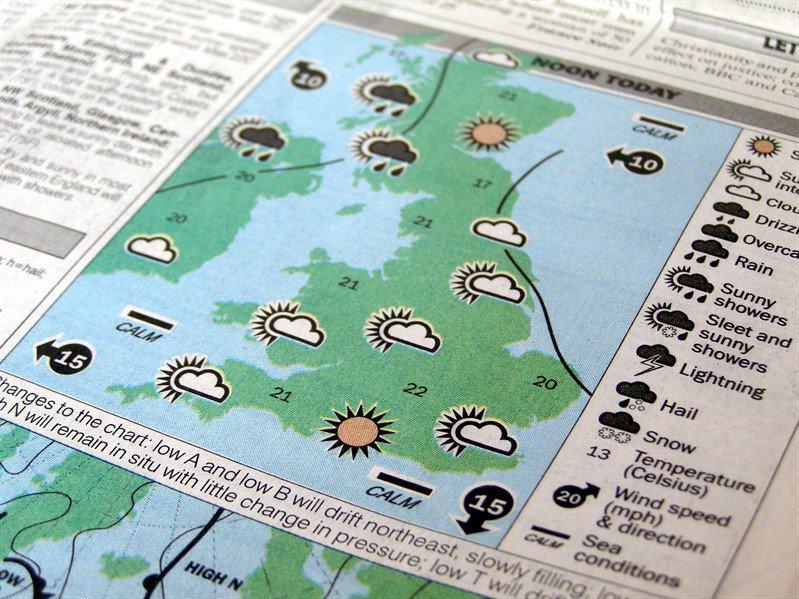For British Science Week 2019, our Zooniverse citizen science partnership was with Operation Weather Rescue. They’re a team of researchers who are working tirelessly to digitise old weather records.
Their project utilises the tried and tested method of people power; drawing on invaluable help from members of the public by asking them to enter pieces of historical weather information into their database.
For British Science Week 2019, we identified two decades of important historical weather data that had never been digitised – and we needed your help to rectify this.

Why do we need your help?
One of the biggest challenges that researchers face is access to historical data sets. Before we had computers, early scientists would often write their data by hand. Every day since 1860 the UK Met Office has produced daily weather reports from across western Europe. Originally the weather observations were transmitted by telegraph to London and collated.
Many of these records have now been scanned or are archived in libraries across the globe. However, much of the data within these books hasn’t been digitised. The most accurate way of doing this is manually entering the data into a computer.
All in all, there are over 2.5 million pieces of data that we need entered from this period – something that would take the team – made up of researchers from the National Centre for Atmospheric Science, the University of Reading and the Earth System Research Laboratory – years to enter themselves. We want to see how far the UK public can get through this huge data set, over the duration of British Science Week.

Why is this important?
Once digitised, it will be the first time that climate scientists and meteorologists from around the globe will have had access to the raw data. This will give them a better understanding of the climate from the past and will help us to predict what the future could look like.
The team will use the data to better examine storms and unusual weather events. As the world warms, the data will provide a baseline to help us measure those changes and monitor climate change, which will impact people and environments across the world.
What was the challenge?
During British Science Week, we sett out to make a start on the digitisation of 2.5 million pieces of data from the years 1860 – 1880.
How did the public help?
Operation Weather Rescue’s ultimate mission was to unearth and digitise historic weather records that will help build a legacy of environmental information, contribute to new discoveries and unlock answers to questions about our weather and changing climate.
Without the public’s help, information about weather and climate collected by generations before us will remain undiscovered.
How can you get involved?
- Even though British Science Week 2019 is finished, you can still go to: http://www.weatherrescue.org and click “Get Started
- Read the instructions in the pop-up box and when you get to the end, select “Let’s go!”
- Become a citizen scientist and help to tackle climate change!
View our step-by-step instructions on how to use Weather Rescue here.
The history behind the project

On 26th October 1859, the Royal Charter ship was driven onto rocks in hurricane-force winds and sank off the coast of Anglesey. 450 souls were lost and there was a large insurance bill left for the gold cargo that went overboard. As a result, the new Meteorological Office, led by Vice-Admiral Robert FitzRoy, was tasked with making the first ever forecasts of the weather, particularly to warn ships about approaching storms in order to save lives.
But to make a forecast requires data. The development of the electrical telegraph allowed FitzRoy to establish a network of weather monitoring sites around the UK whose observations could be sent to London and collated quickly. This data was used to make a daily forecast and to issue storm warnings if required.
The images you see in this project are the weather observations collated in the early years of this endeavour, written by FitzRoy himself until 1865, and by his successors afterwards. Each image captures the weather conditions on a particular day across the UK and north-western Europe. The Times newspaper published the detailed weather observations every day from September 1860 and the forecasts from August 1861 onwards.
However, this weather data cannot currently be used by meteorologists and climate scientists because it has not been digitised – it all still lives in the Met Office’s archives waiting to be discovered.
Find out more
You can explore the project here: http://www.weatherrescue.org
What other ways can you help?
There are many ways you can help scientists, learn about the weather and do you part for reducing the impact of man-made climate change. Below are some articles and resources to give you inspiration: